To identify a social group and advocate an idea, historian Yuji Ichioka and activist Emma Gee coined in the late 1960s the term “Asian American” which later became widely known. By 1992, the month of May was officially designated Asian Pacific American Heritage Month. This demonstrates that Asians have forged their own power and voice with their own wisdom and courage and have become co-builders of American social and cultural lives from an outsider status. Asian artists, Asian-related art, and art institutions have sprouted here in recent decades. Art+Tech: An Asian American Experience, curated by Dr. Zhijian Qian, a professor of art history from the Humanities Department at City Tech of The City University of New York, took place at City Tech’s Academic Building from May 2 to 12, 2023. This exhibition serves as a sample for us to learn about the following aspects: the recent development and evolution of art and technology, the catalysts for art from art creators’ regenerative experiences in different environments, and reflections on Asian groups' conceptions of categories and the status of identity diversity. In terms of the last point, the twenty-one artists and their works reveal the complexity of the Asian American community from geographical, cultural, and identity contexts, all of which corrects the public’s stereotypical understanding that “East Asian” is a substitute of “Asian.”
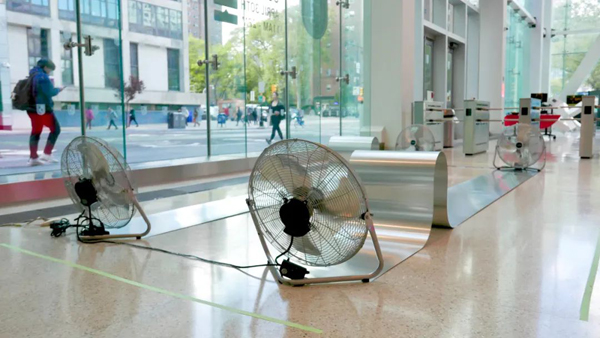
Sizhu Li, What is Watt, 2019, aluminum sheets, wood, arduino, sensors, fans, dimensions variable, photo: Chang Hong. Courtesy of the artist
The kinetic installation What is Watt (2019), called after the energy rate by artist Sizhu Li, conjures childhood memories of wind over the wheat field, the rolling boulder of Sisyphus in mythology, and the pulsating bio-signals on the ECG meter. The “wave” is made of aluminum sheets that move back and forth under the fan's blowing, which forms a moving bridge. Its movement is the combination of kinetic and potential energy, which comes from the wind's effect and also from the wind's induction. The subtle reactions that happen between different materials share similarities in sensation with the wind that blows notes in Japanese artist Takafumi Ide’s Waft (2019). Notes are generated by the wind blowing above the wind chimes as the sensor detects an approaching body, rather than by writing on paper. By using different materials and techniques, the two artists explored Asian philosophy, such as Zen and Ying and Yang, as well as balance. Similarly, their works convey a human temperature, which counterbalances the material’s physical properties, as evidenced by Li’s moving waves. It conveys a distant message of longing for her loved ones, which exudes the poetic meaning of Zhang Jiulin’s poem: the sea mirrors the rising moon and our hearts echo at this moment. The material’s high reflectivity lets it shine like sprinkled moonlight and helps Li reach the other side which she cannot access. Asians who are discriminated against will certainly receive the same emotional support. Loved Ones Map (2019) by Lulu Meng, an artist from Taiwan, China, emphasizes our connection with the people we love. Inspired by the COVID-19 map by Johns Hopkins University, she made a hope map that engages people and marks the locations where people who matter to them are on it with a heart-shaped symbol. The heart shape beats continuously, giving a vivid breath of life and emotional power. This positive effect relieves anxiety caused by rising cases.
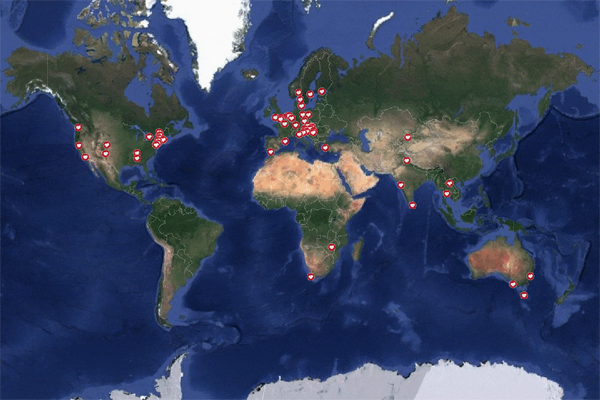
Lulu Meng, Loved Ones Map, 2020, interactive map, aimensions variable. Courtesy of the artist ?Lulu Meng
Meng’s interactive map is an ongoing project that reveals the trace of “loved ones.” Its form reminds me of the artist Maya Lin’s connective map, designed for extinct species based on science, and engages audiences to write about their memory of these species and conservation initiatives. As opposed to “extinction,” Meng uses interactive techniques to capture the power and love of being alive. Regardless of what kind of species we are concerned about, it is a wake-up call for humanity. Like Li's installation, Meng's piece also emphasizes two points and the connection between them, such as the different distances and places. In contrast, Israeli artist Zac Hacmon discusses the concept of boundaries around “in-between” spaces, like valleys and between two points. Beyond the Pale (2020) is a group of large-scale interactive installation sculptures that consist of his iconic white ceramic and are in the form of a military hedgehog, a military tactic used by European armies during the war. The contrast between peace and violence is highlighted in this material and form, along with the unity of shelter and protection. Several vents were installed on each outward-facing facade to transmit the sounds he collected from the Arizona and Mexican borders, like the sound of walking along the migrant trail to refill tanks and the stories of an anonymous asylum seeker and worker. Earlier, Hacmon worked for one year with Alexa, a woman from Nicaragua seeking asylum in the United States, and created a work with her daughter’s name, “Mia.” The forces of natural emotion intertwine in the background of reality to form an “in-between” of virtual space where spiritual, geographical, and imaginary boundaries exist.
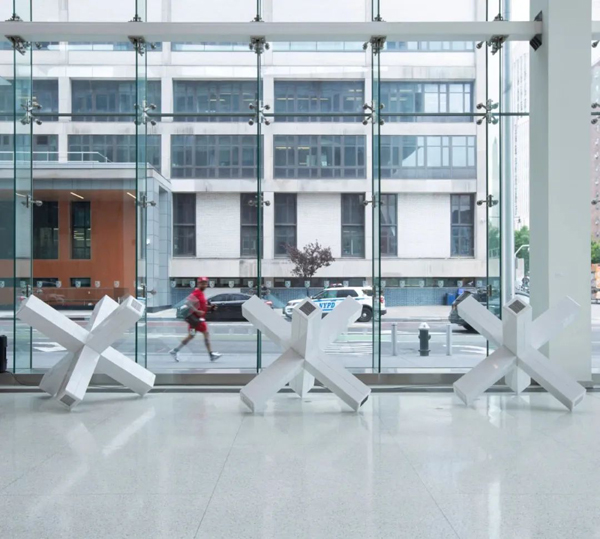
Zac Hacmon, Beyond the Pale, 2020, wood, steel, ceramic tiles, amplifier, batteries, wire, speakers, grout, plastic, 54″ x 65″ x 70″ (each of 2 sculptures). Courtesy of the artist
Buhm Hong, unveiled (a part of video installation Rooms and Rooms), 2016, HD video, variable, 1min 55 sec. Courtesy of the artist
If Hacmon’s concept of “in-between” contains an invisible space idea, Korean artist Buhm Hong inspires from within visible space. By staying in abandoned houses in Korea, he perceives the environment with his body, paints images of emerging personal memories and imagination with an ink pen, and then scans them for combination in the video he shot. These seemingly transparent images move in the abandoned house, producing an illusion as they pass through the walls’ cracks and enter through the doors, like moving ghosts. Location and memory function together to pave the way for audiences to reach their personalized state. With VR, Yangyang Mao, Chang Hong, and Lijiao Mu create a personal area that enables us to focus on our bodies’ perception and movement. This immersive space with meditation meaning is non-destructive and advocates accepting the body and mind naturally. Red particles will evoke collective emotion and memory as they move in front of our eyes. Mao was personally involved and thought of it as a process of self-awareness and self-transformation so she created several graphic works depicting her feelings. Each person in such a process develops their own feeling which is actually a situation that necessarily occurs based on a subjective basis.
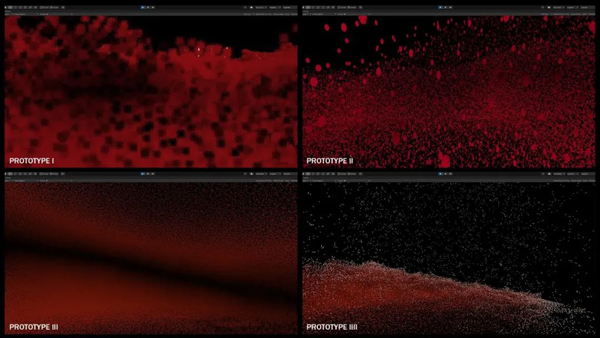
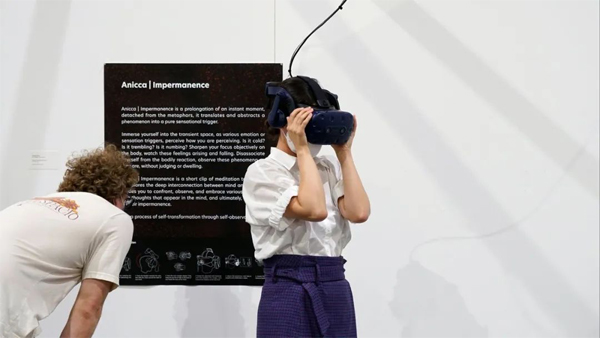
Image 1 and image 2: Yangyang Mao, Hong Chang & Lijiao Mu, Anicca | Impermanence, 2022, Sound, Particles, PS, Al, Pr, Reorder, HTC Vive, Screen, card, 10' x10' x10'. Courtesy of the artist ?Yangyang Mao, Hong Chang
In this sense, Qin Han’s video is a reflection of self-transformation as she views the face as an identifying feature and creates two digital 3D faces, based on herself and a Korean woman’s face, infused with various materials and colors. It shows the influence of immigrant experience on shaping personal identity and self-reconceptualization. Her work is like Hacmon’s in that they all deal with minorities and immigrants and incorporate poetic elements into their expression. Through a similar migratory experience, there is a familiarity established between the self and the other that reflects a clear state of reality and together with her ideas about selective history. Iranian artist Parasoon Ahoon captures daily familiarity and real situations in the flying bird, a masked woman, and iconic patterns which are symbols of personal identity, history, and culture. Both the bird that flies around and the woman in stillness embody her thoughts on culture’s contradictions and discrepancies--the culture of her own experience and the culture she learned from history. The Bird & I (2019) was originally a painting but through video, it was transformed into an entirely different expression. Similarly, the artist Micheal Sheng transformed a two-dimensional image with software and video, altering its static state. In his two works, oil paint in motion creates a fluid visual effect and a “breathing” state. In contrast, the artists Suzan Shu Zhu and Yixuan Chen, and New Media Future Art Group focused on pigments and dissected them thoroughly. This is an exploration of materials through technical means like photography, color grading, and software synthesis techniques. They render the dazzling and colorful effect of pigments dissolved in water.
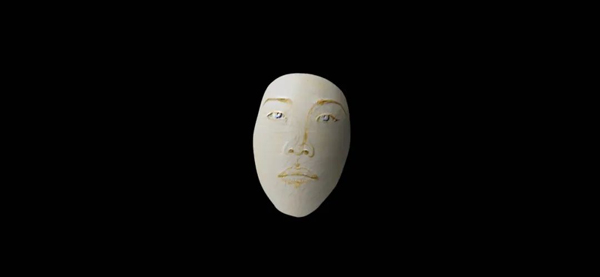
Qin Han, My Fatherland--I Am, 2022, video, dimensions variable. Courtesy of the artist
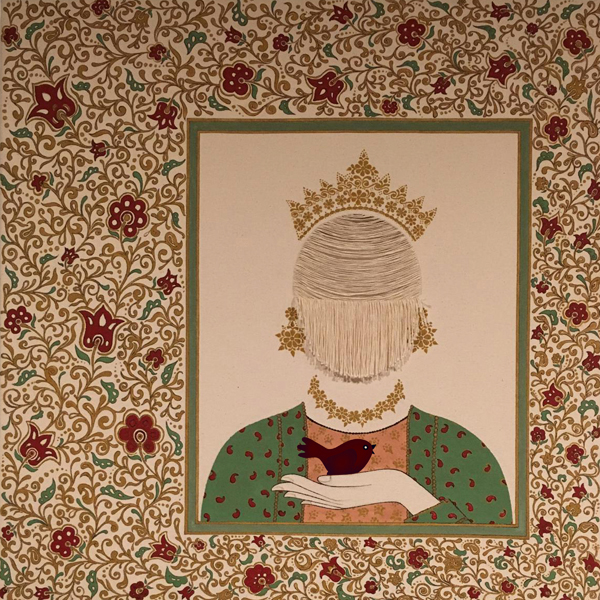
Parastoo Ahoon, The Bird and I, 2019, video, dimensions variable. Courtesy of the artist
Sicheng Wang & ACE Lab, Virtual Immunization Project (cut), 2021, video, 43 sec. Courtesy of the artist
In the 21st-century wave of technology, artists Sicheng Wang and Jing Lin embark on a virtual and futuristic perspective and choose technologies available to establish a profound relationship with reality. Inspired by COVID-19 mRNA research, Wang and ACE Lab created the digital art Virtual Immunity Project (2021) with video, 3D modeling, installation art, sound art, and blockchain. This virtual environment exemplifies science and art innovation and lets audiences feel like they are traveling through the dynamic process of human immunity to the virus. Lin also created an experience that was more like a single player's viewpoint in games. In cyberspace, she develops an AI version of herself who can travel to Earth to witness beautiful landscapes and different crises. This is a posthuman view achieved by technology, which tends to subjective judgments. Yet it is evidence of the renewal of information and technology and people’s heavy reliance on the internet. Particularly in the post-pandemic era the internet has become people’s primary method of passing time, commuting, and socializing. Japanese artist Izumi Ashizawa’s performance shows a scene where human beings are surrounded by networks. Through imitating the initial state of a virtual character and then putting on the clothes given by the viewers, she discusses the phenomenon of people submerged in the virtual network and losing their qualities. Despite the performance and Lin’s intelligent technology, they all reproduce the situation where the human subject slowly blurs in an age bursting with high technology and the internet.
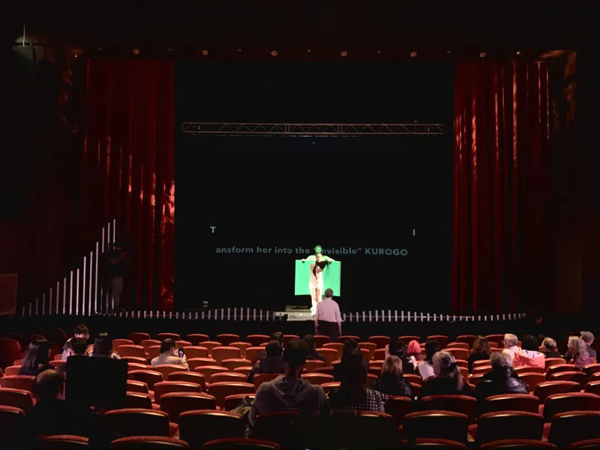
Izumi Ashizawa, Kurogo Me: Version 1.0, 2023, performance with a short video, two long strips of Styrofoam boards, and 4 pairs of shoes, at the Theater at City Tech
Artist Yue Liu has considered this question. In her video, images presenting human behavior and artificial intelligence images appear crosswise on the screen; people will think about the subject-object relationship between the two. Will human beings be redefined? Artificial intelligence may not replace humans, but it will enslave and discipline their minds and make them truly stifled. This crisis and reflection trended in the previous industrial revolution as well, not just in the age of intelligence. Focusing on different groups of people, the artist Xiaofei Li presents the state of people caught in the information, capital, and industrial environments. In the films I Am a Group of People 1 (2020) and I Am a Group of People 2 (2021), the silence and blank workers repeat gestures and work on the pipeline; while the intellectuals keep talking about their thoughts and perspectives on individuals, society, and the environment and beliefs, presenting different faces and characteristics. Silent workers and interviewees who talk passionately are intertwined and paralleled, along with human voices and machine sounds, which creates a Game and counteract. When the human voice is muted, the sound loses its meaning. When working images show up on the screen, thinking in such a society as this is probably an act of excess. For the artist who cannot help but question whether art makes him one of the surplus laborers, Li introduced the concept of “I” being “he/she.” He reflects on the thinking of a “group of people” through an ethnic group and combines his masterful production techniques to express their immobility and inability to break free.
Xiaofei Li, I am the People 1 (part), 2020, HD video/PAL/color, sound, 2 min 25 sec. Courtesy of the artist
Human ingenuity contributes to industrial development’s continuous evolution and renewal. However, the problems caused, no matter how new or old, remain in a legacy state. The artists Micheal Sheng, Sizhu Li, and Sungmo Cho all present the influences of people's behavior on nature and the city. But the latter two artists focus more on industrial materials. Li uses light bulbs, iron frames, and aluminum sheets to build a towering castle that intersects between the real and the imaginary, and between utopian and cruel reality. With line products, such as graphics cards, heat sinks, and data lines, which condense countless brain and physical work, Cho created an installation that is like a tower bearing human technology development. The lights flickering at the top remind us about civilization and aggression.
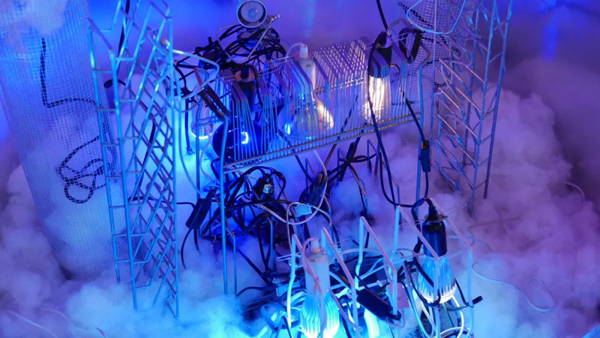
Sizhu Li, Electricity Factory, 2018, aluminum sheets, kitchen wires, cotton, Arduino, sensors, light bulbs, dimensions variable. Courtesy of the artist
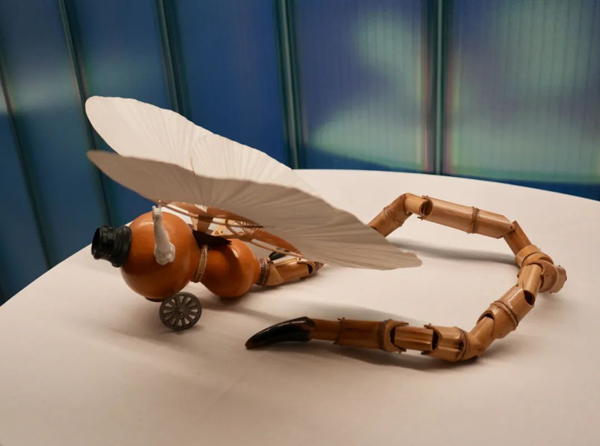
Weixian Jiang, Untitled 2022 #1, 2019, wood, bamboo, metal, plastic, 30″ x 24″ x 10″. Courtesy of the artist
The organic complement of industrial and natural materials is a series of sculptures made by artist Weixian Jiang, who emphasizes pure manufacturing techniques. He transformed everyday objects with wisdom minds like gourds, bamboo, and camera accessories into a small sculpture that resembles an entirely different type of insect. Such whimsical ideas are inseparable from his concerns and thoughts about life and art. In the same inventive way, artist Chenlin Cai uses contemporary techniques and materials to activate traditional images. So his work looks like a traditional landscape painting from afar, but it is actually a collage of X-ray images printed on transparent mylar. The landscape painting printed with human skeletons will follow its surroundings to react. He derived his experience from his own history and culture as other Asian artists do.
Therefore, it can be said that Asians are not limited to a name but to a treasure rich in resources. How to transform them requires ability and judgment. In the eyes of artists, art and technology have practical and emotional reflections, as well as visual oppositions to cold and warm, and their emotional connections. However, they are not two wholly opposed notions and have a dynamic interplay. And the end-products of two different systems created by their hands become a method and perspective for their understanding of the tangible world.


